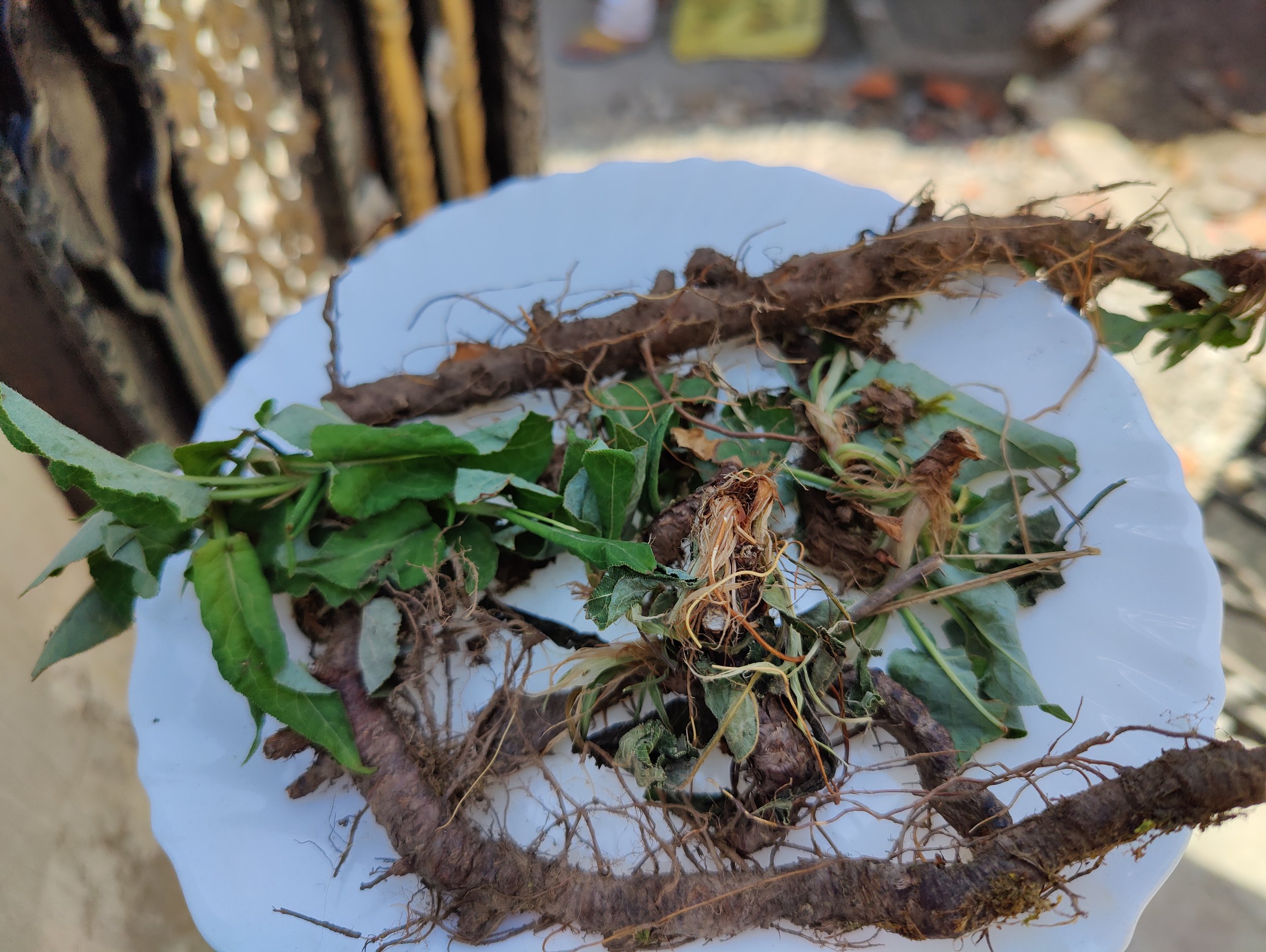Mundie’n Aali Chaa, the Wild Tea of the Dogras

A wild root in the Himalayas has incredible medicinal properties, writes Bivek Mathur.
Dr. Om Goswami, an expert on Jammu’s food, and other cultural aspects writes in his book, Dogra Khaan Paan Evam Ahaar (Jammu’s food and diet): “During the worst famine of 1834 Vikrami (1977 as per the Gregorian calendar) that lasted for around one year, millions of people died due to shortage of food in other parts of India”. He goes on to write, “But not even a single death was reported from Duggar Pradesh (a region comprising then parts of Himachal Pradesh and Jammu division)”. According to Goswami, the Dogras (residents of Duggar Pradesh) survived the famine because they consumed wild grasses, dried bark of stems and roots of various plants and trees, and wild edible mushrooms.
Accepting the fact that all the wild grasses, stems, roots and mushrooms aren’t edible, Goswami further writes in his book, “The Dogras had developed a deeper understanding of the forest products over the years due to their centuries old dependence on the forests for their survival. This helped them choose between the edible wild products and the poisonous ones.”
Apart from consuming the easily available wild fruits like wild berries, strawberries, figs, and some flowers in the upper reaches of Jammu, Dr. Goswami says, the pahadis (people who live in mountains) also love to drink a wild tea, popularly known as mundie’n aali chaa, which literally means ‘tea of roots’.
Dr. Goswami writes, “This brew provides tremendous energy, and is popular among the Himalayan monks who offer penance by not consuming food for days and months together.” Referring to the Himalayan monks, he explains, “They drink this tea in the morning and it keeps them energetic all day.” According to Goswami, former Prime Minister Indira Gandhi’s Yoga Guru Dhirendra Brahmchari, who used to live in Mantalai area of Chenaini Tehsil in Udhampur district of Jammu and Kashmir, would also drink this tea every day.
Former IFS officer, OP Vidyarthi, who retired as Principal Chief Conservator of Forests, J&K government, explains that the scientific name of Mundie’n Aali Chaa is Bistorta amplexicaulis, and commonly known as adder’s tongue as the leaves of the tea resemble an adder —a common European viper. The tea plants, Vidyarthi says, are found only in those areas of Himachal Pradesh, Uttarakhand and Jammu and Kashmir, which experience heavy snowfall.
“I have no idea whether people in Himachal or Uttarakhand drink this tea. But in Jammu as well as Kashmir regions, this tea is so popular among the pahadis, particularly the Gujjars (a tribal community), who couldn’t afford to go to the markets in the plains during their seasonal migration period to the upper reaches of Jammu and Kashmir,” says OP Vidyarthi, the recipient of Sahitya Akademi Award, the second highest literary honour in India.
In Kashmiri, he says, the tea is known by the name macharan chai and masloon chai, while in Urdu, the tea is called anjubar. In Dogri language, it is known by the names maleshai’n and mundie’n aali chaa, which literally means ‘the tea of roots’.
When to harvest the roots and drink tea
According to OP Vidyarthi, who is also known as ‘Dogra Green Man’ due to his deeper understanding of forests and the forest products, the best time to harvest the roots of Bistorta amplexicaulis is July-August.
“Usually, flowering starts in the tea plant at the age 2-3 years. And the seasonal time of flowering is July-August. So after a plant bears flowers, one can harvest the root when it attains the size of a pencil,” he says. As for the best time, it is between July-March in the hills, and winters in the plains.The reason that it is consumed only in the winters in the plains is that this tea can increase the blood pressure in warmer areas due to its heating effects.
Medicinal uses
Pahadis living in the mountains claim they drink mundie’n aali chaa because it cures various body aches, whereas Mr. Vidyarthi claims the tea is valued because it is rich in anti-oxidants and tannins. “It also cures various digestive and respiratory disorders.”
Who shouldn’t be drinking this tea?
According to Dr. Om Goswami and Mr. OP Vidyarthi, both pregnant women and high blood pressure patients should avoid drinking hilly tea due to the hot effects. “Even a small quantity of this tea can cause high BP in pregnant ladies and those who are already suffering from high BP can experience bleeding in the nose,” Mr. Vidyarthi says.
How to prepare the tea
To prepare 250 ml of tea, add one cup of water in a pan. Then add one dried root of Bistorta amplexicaulis of approximately one inch length in the water, and boil it till the water turns pinkish in colour. Then add 2 pieces of ground cardamom and a small ground piece of ginger for taste. Add one cup of milk and sugar to taste. Boil the tea again for approximately 2-3 minutes and serve hot. The tea has a fruity flavour.
Bivek Mathur is an independent journalist based in Jammu, Jammu and Kashmir with almost 10 years of print and digital media experience. Follow him on twitter.
THE GOYA JOURNAL








